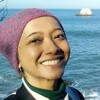Muhammad Amin Sidik was out recently on a fishing trip in Saleh Bay on the island of Sumbawa, Indonesia. His boat rocked with a new haul of high-value reef fish: groupers and snappers. He took out his smartphone, a Huawei model, and prepared to measure their length, an effort intended to protect these two locally threatened species.Sidik is in a pilot group of small-scale fishers involved in the Sustainable Grouper and Snapper Fisheries Program in Saleh Bay—a collaborative effort spearheaded by Indonesia’s Directorate of Ocean and Fisheries, district and provincial authorities, and the nonprofit Wildlife Conservation Society’s Indonesia Program. The program aims to document stock conditions of grouper and snapper fisheries through a combination of community-based monitoring and scientific analysis.
Advertisement
Started in April 2016, it trains local fishers and collectors to document their catch data, then collates it all into one big database. Many of the grouper and snapper stocks in Indonesia’s territorial waters are unknown. Sidik assists in gathering information such as catch amount, fish length and size, types of fishing gear used, and the frequency of fishing trips. Data is collected every day at fish landing sites across five villages in the area through a database managed by WCS Indonesia.
Fishermen from Saleh Bay in 2016. Image: Nanang Sujana/WCS
Sidik examined a red grouper he’d caught earlier on his boat. “The average length of this fish is 320 millimeters, which means it’s a mature fish,” Sidik told me. More than 50 percent of the red grouper catch in Saleh Bay is juvenile—meaning they have not been able to reach their full size or breed. Fishers here notice their depleted supply from years of overfishing. “Many of us depend on fishing as our vital source of food and livelihoods, and we need to do something about it,” added Sidik.Snappers and groupers have been harvested in Saleh Bay since the 1990’s, with a growing demand from Hong Kong, Taiwan, Japan, and the United States. The West Nusa Tenggara (NTB) province, where Sidik is based, is one of the most important sites in Indonesia for grouper and snapper fisheries, and the country is the second-largest producer of wild-caught seafood in the world. These species are not under protection by government law, and the absence of regulations could potentially bring local fisheries to a collapse, with devastating consequences for fishers like Sidik.
Advertisement
Like many small-scale fishermen in the NTB province, Sidik operates around reefs using a small motorized fishing boat. His craft has been outfitted with a satellite-tracking device called a SPOT Tracer, which sends live signals to the smartphones and laptops of scientists to help them map out an area of the fishing grounds for snappers and groupers in Saleh Bay. It’s a form of data collection that lets scientists know about the stocks of these fish, ideally to protect them from local extinction.
Smartphones are common in Saleh Bay, making them a useful tool for the approximately 400 fishers actively involved in the program, with a monthly data plan costing around 50,000 to 100,000 Indonesian Rupiahs (approximately $4-8 USD). Sidik’s phone is installed with a specific software called ‘WCS Fish’. However, this limits its uptake amongst local fishermen, as not all Android interfaces are compatible with the software.Read More: The Internet of Elephant Seals
Muhammad Amin Sidik uses a smartphone provided by WCS to key in information about his fishing trip. Image: Tezar Rafandi/WCS
By uploading images of the fish from their smartphone or a simple waterproof camera to the WCS database, important information can be determined about stocks that end up in the markets. Scientists can estimate if the fish are juvenile, and measure the impact that fishing has on the ability of each fish to reproduce.From April 2016 to March 2017, data was gathered from a total of 922 fishing trips in Saleh Bay. Findings paved the way for the first-ever small-scale coral reef Fisheries Management Plan in Indonesia, launched in November last year.
Advertisement
Communities here are working towards restoring fish populations based on scientific information about fish stocks, gathered methodically by fisher groups, traders and conservationists, and data-driven decision making. Using data on the optimum size for the target species to reach maturity, a recent implementation on size limitation was agreed during 13 public consultations with the local government. Fishers and collectors in Saleh Bay now do not catch, nor accept, groupers and snappers under 500 grams.
Muhammad Amin Sidik with a red snapper. Image: Rifky/WCS
This information is also being made available to provincial and district authorities to translate into science-based policies to protect the fisheries. The program is set to continue for the next 10 years.“I have been fishing here since I was 10 years old; it’s in my blood,” said Sidik, who believes his catch has increased in the past couple of months, although the data has yet to confirm it. “I’m hopeful that if the community here does our part to protect these fish stocks, it’s only going to get better.”Get six of our favorite Motherboard stories every day by signing up for our newsletter.
